The small research team from the Japan Agency for Marine-Earth Science and Technology (JAMSTEC) have been recovering and deploying moorings in several places along our route north of the Bering Strait. One type of mooring that they have been recovering are sediment traps. Jonaotaro Onodera is the primary researcher and is using these traps to collect organic and inorganic materials falling from the top of the water column down to the bottom.
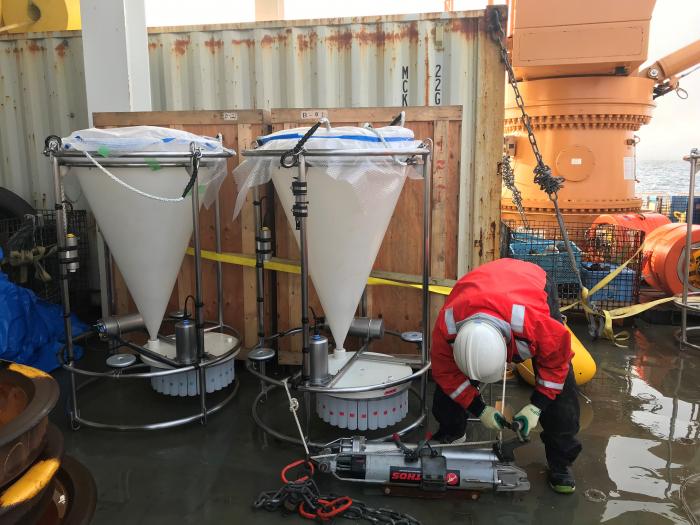
These traps are moored in the water column for one year and have a large funnel that catches materials falling to the bottom of the Arctic. At the pointed end of the funnel, there are 24 small bottles on a wheel. Every 2 weeks, the bottles are rotated remotely so that when scientists recover the trap, they get data in time increments. The instrument is held up right by a series of yellow buoys above the trap in the water column.
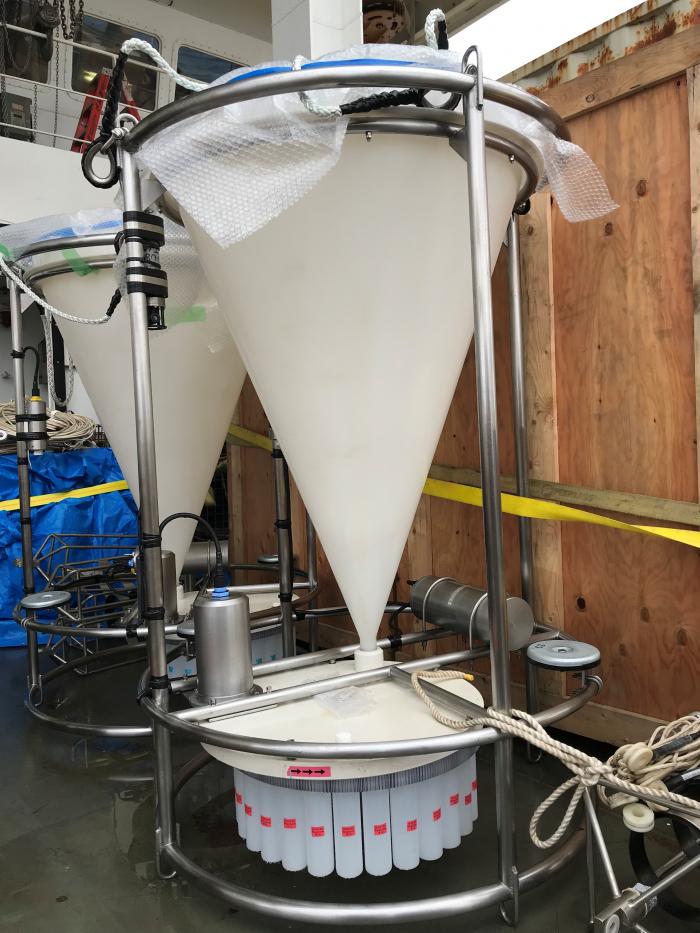
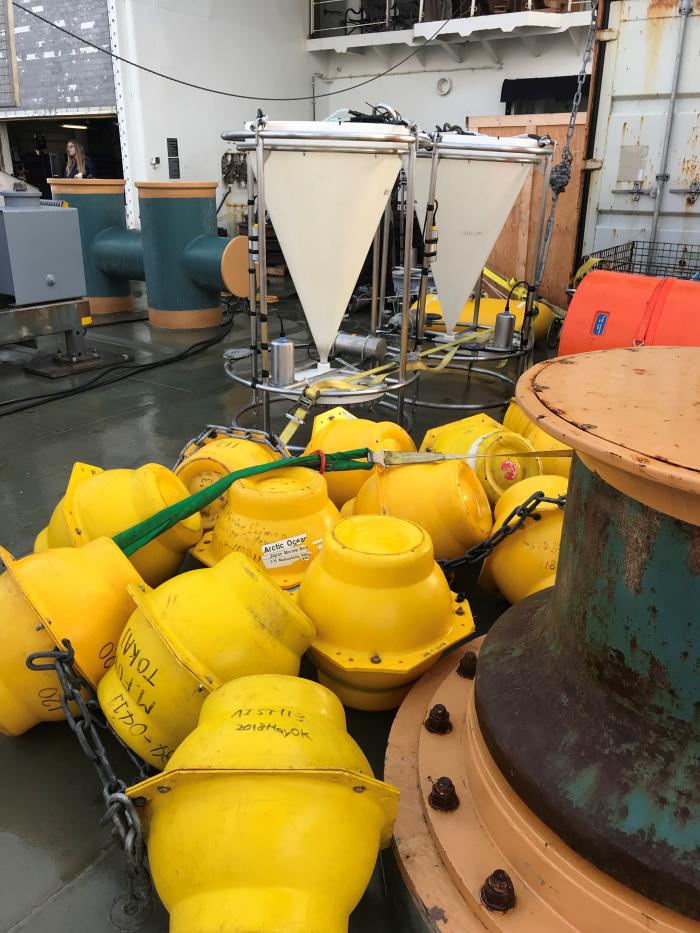
When sediment traps are deployed, the funnel is filled with a highly saline solution that is more dense than the surrounding seawater. This keeps water and materials out while it is being lowered into the water column to avoid contaminating data. The saline solution stays in the funnel for the duration of the experiment to also keep it clean and uncontaminated while the materials fall in throughout the year. When the ship was at the location of the sediment trap, Jonaotaro used a "ping" to tell the trap to detach from the mooring and float to the surface. The small Coast Guard boat would then recover the floating trap and bring it to the back of the Healy to be pulled up.
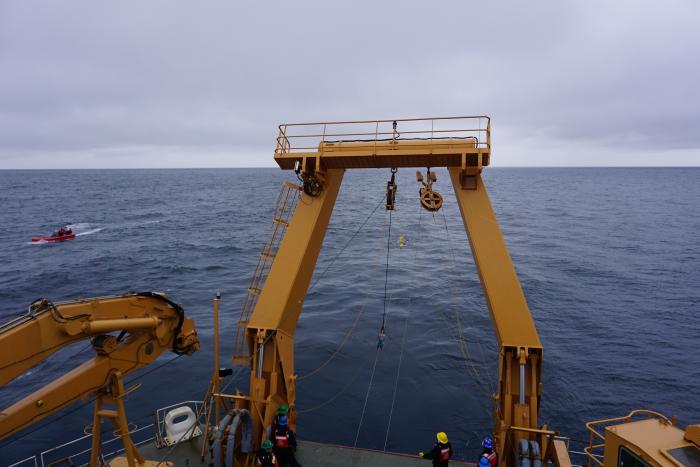
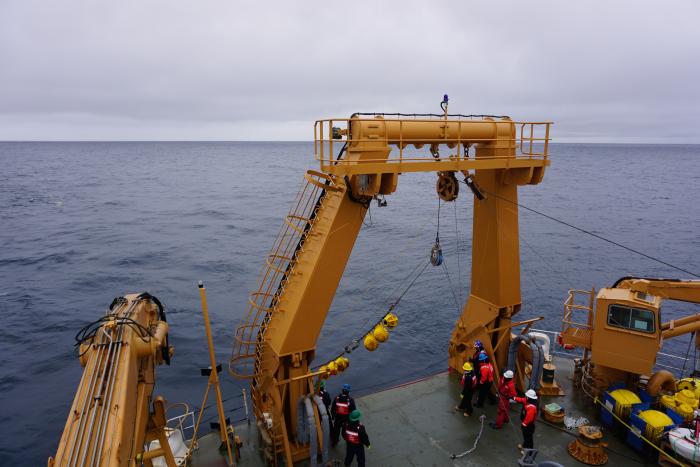
So what does JAMSTEC do with the data from the sediment trap? They are looking at the biological pump of the carbon cycle to see how productive certain areas in the Arctic are. The biological pump is how carbon gets from the atmosphere, to the ocean interior, and finally to the sediments on the bottom. It can be divided into three sections. First, phytoplankton at the surface of the water use carbon dioxide and sunlight to do photosynthesis and other organisms use carbon to create calcium carbonate protective shells. Second, these organisms begin to fall to the seafloor and aggregate into larger and larger amounts as they fall. Finally, as they descend, they begin to die and bacteria break them down to be used again in primary production. By understanding more about this process, scientists can learn about the productivity of an area to determine how larger trophic level organisms (such as fish, whales, and other marine mammals) will do in that ecosystem.
A Question From the Crow's Nest
How might sediment traps be useful for benthic research?
Answer from previous post: Bioaccumulation occurs when an organism absorbs a substance at a rate faster than that at which the substance is lost. In other words, there are certain substances, such as microplastics, that can accumulate in an organism because they can't be expelled from their bodies fast enough.


Comments